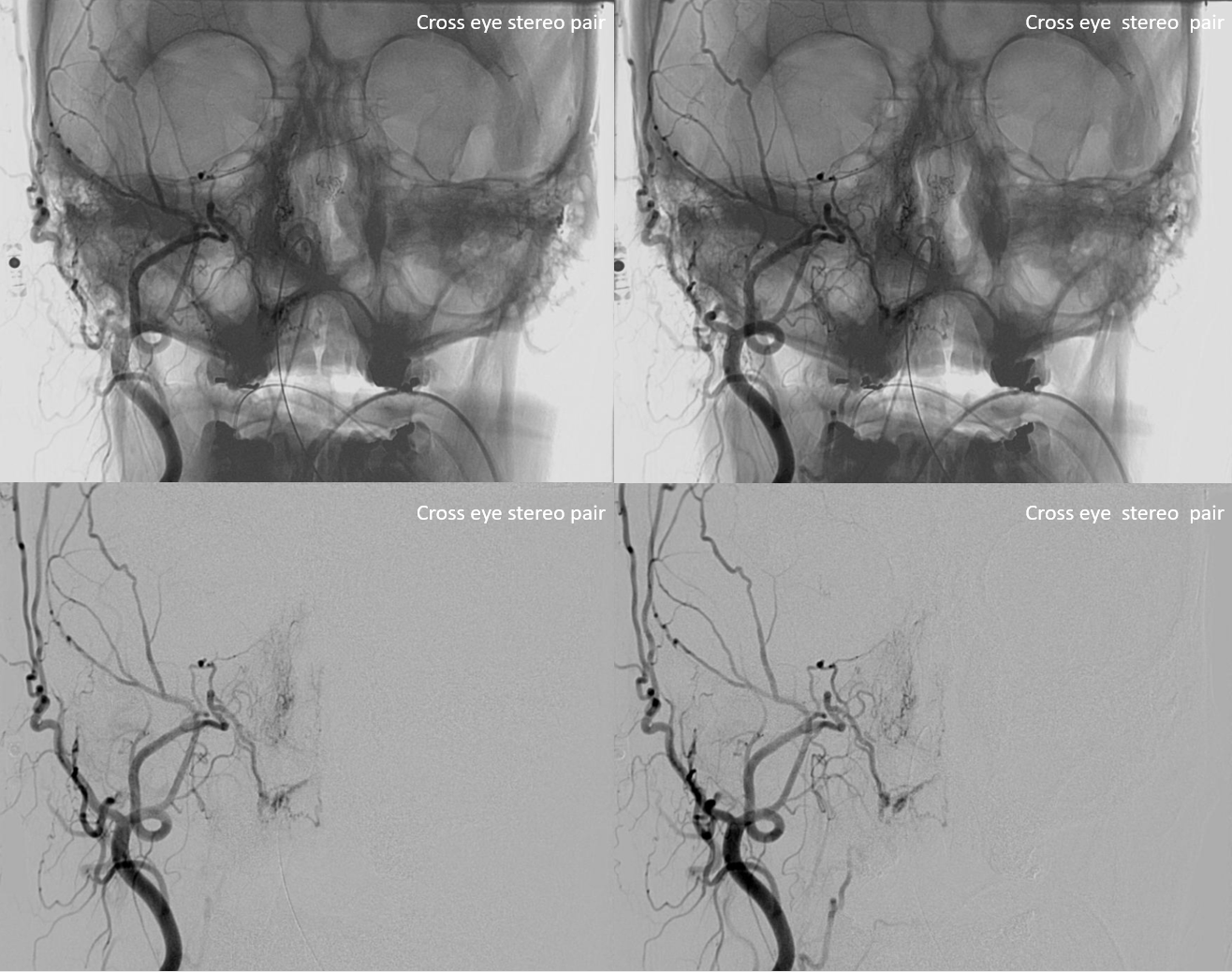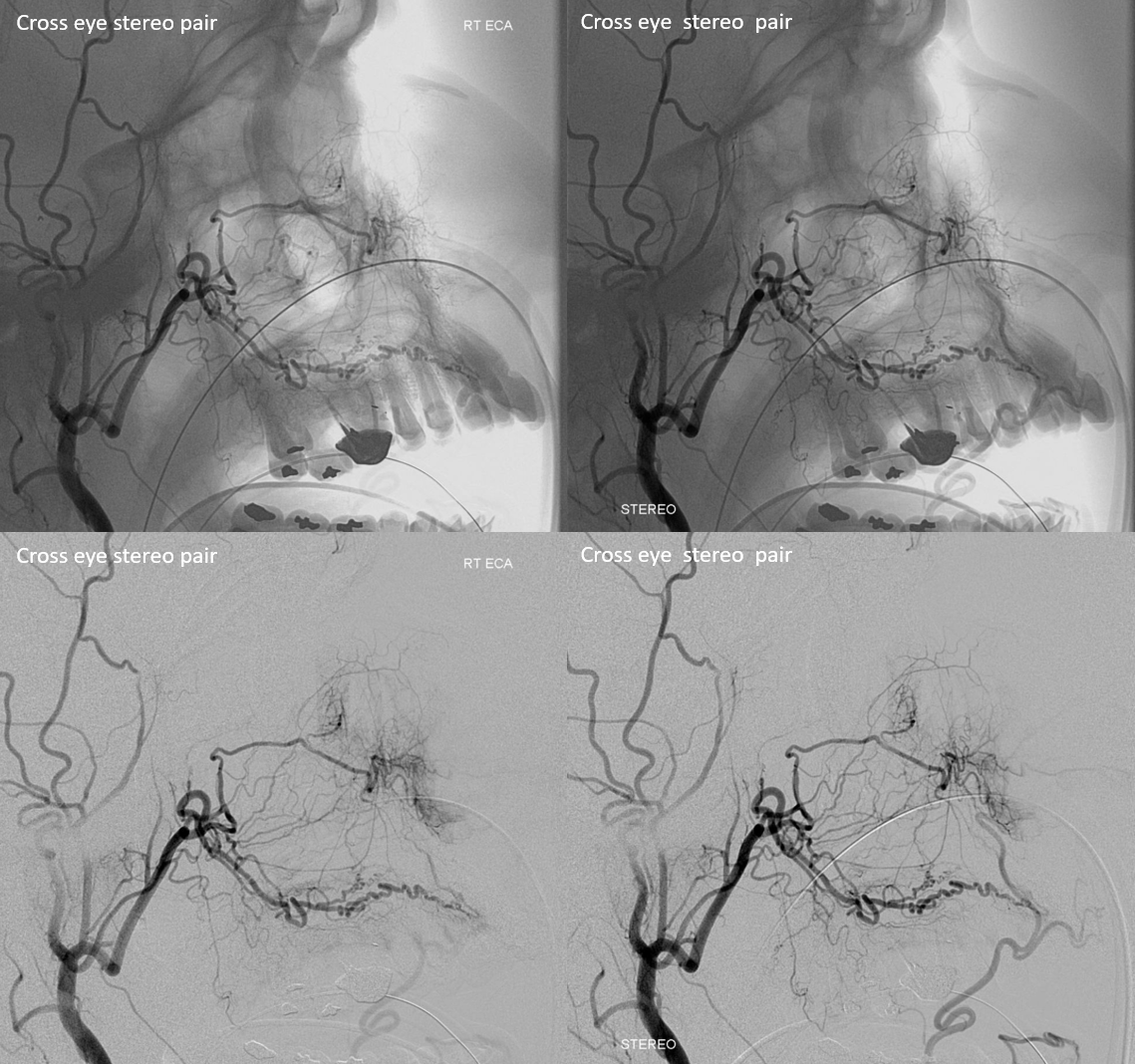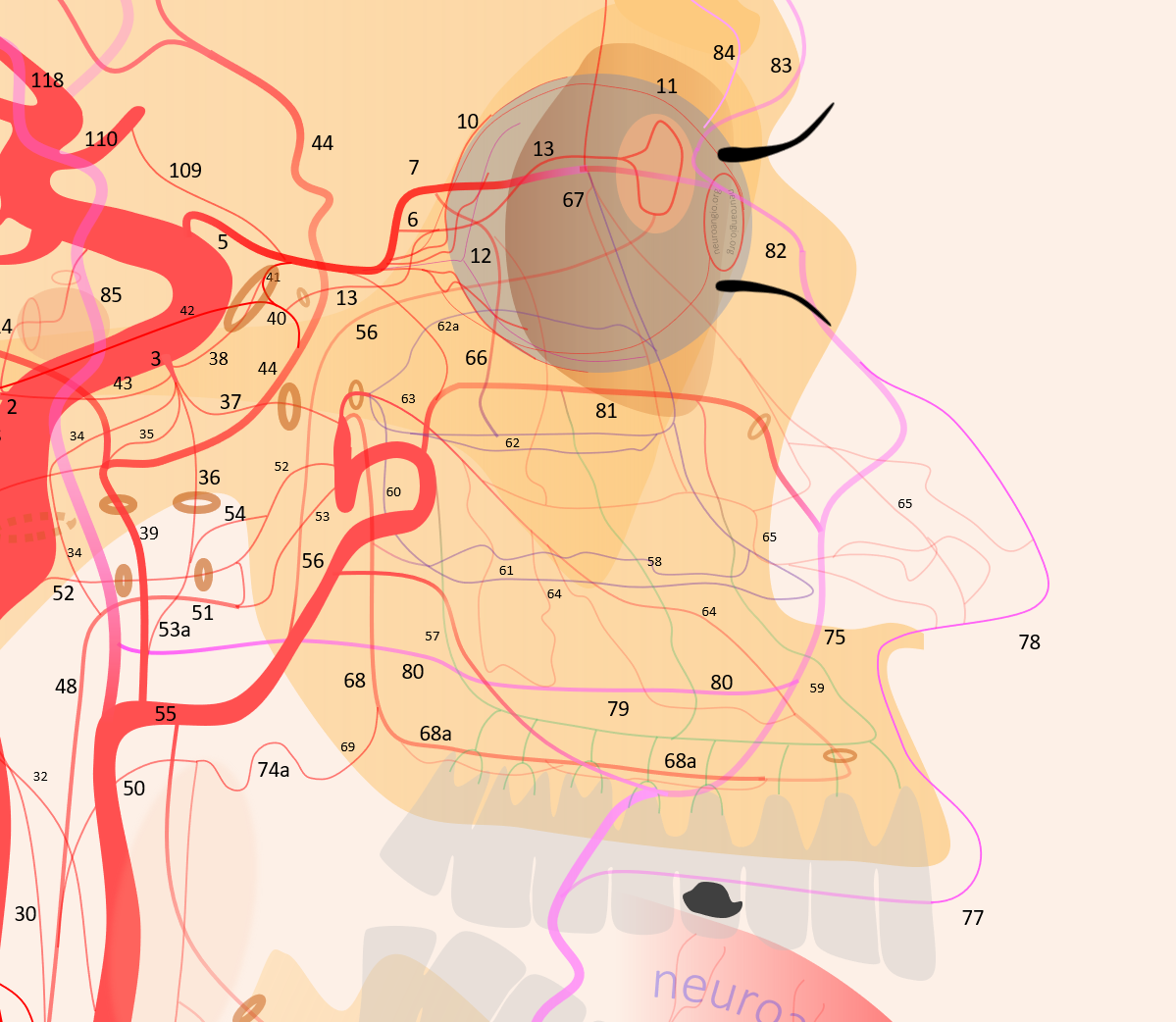
60 – sphenopalatine artery lateral nasal branch mainly supplying inferior (61) and middle (62) turbinates; 63 – mesial branch of the sphenopalatine artery, supplying posterior (64) and anterior (65) nasal septal systems, together with the corresponding posterior (66) and anterior (67) ethmoidal arteries; 68 – greater palatine; 69 – lesser palatine
Main artery to the nose. The target vessel for epistaxis embo. Angio of this area can be confusing. As usual, we remove confusion. Key is frontal views — its a about planes — the most medial plane is the nasal septum — and septal branches of the sphenopalatine artery. These are anterior and posterior “regions”. Interconnected of course. Supply is shared with ethmoidal arteries. In many cases ophthalmic supplies a lot of the septal and superior turbinate territory.
Lateral to the septum, there are turbinates and lateral nasal wall. These are supplied by lateral branches of the sphenopalatine artery. Extensive collaterals. Biggest inferior turbinate gets most supply.
On lateral views, you can kind of see turbinate branches as horizontal, whereas septal branches are oblique, usually from posterior up to inferior down.
Finally, most laterally, is the descending / greater palatine branch — its a big one in almost all cases. Responsible for all of hard palate and some soft also usually. Connected to the superficial septal network via the incisive canal.
here is a typical view during epistaxis embo
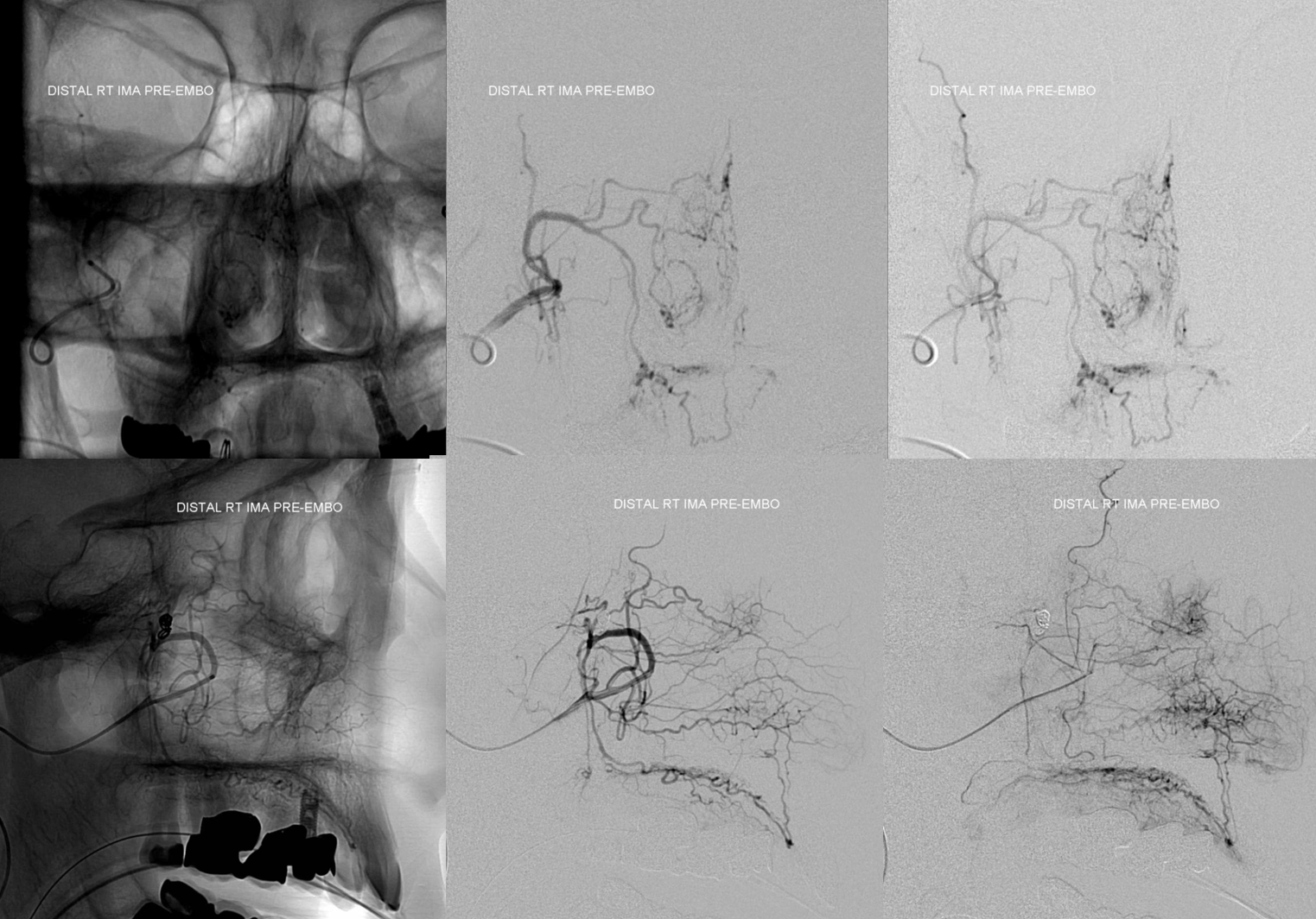
With numbers
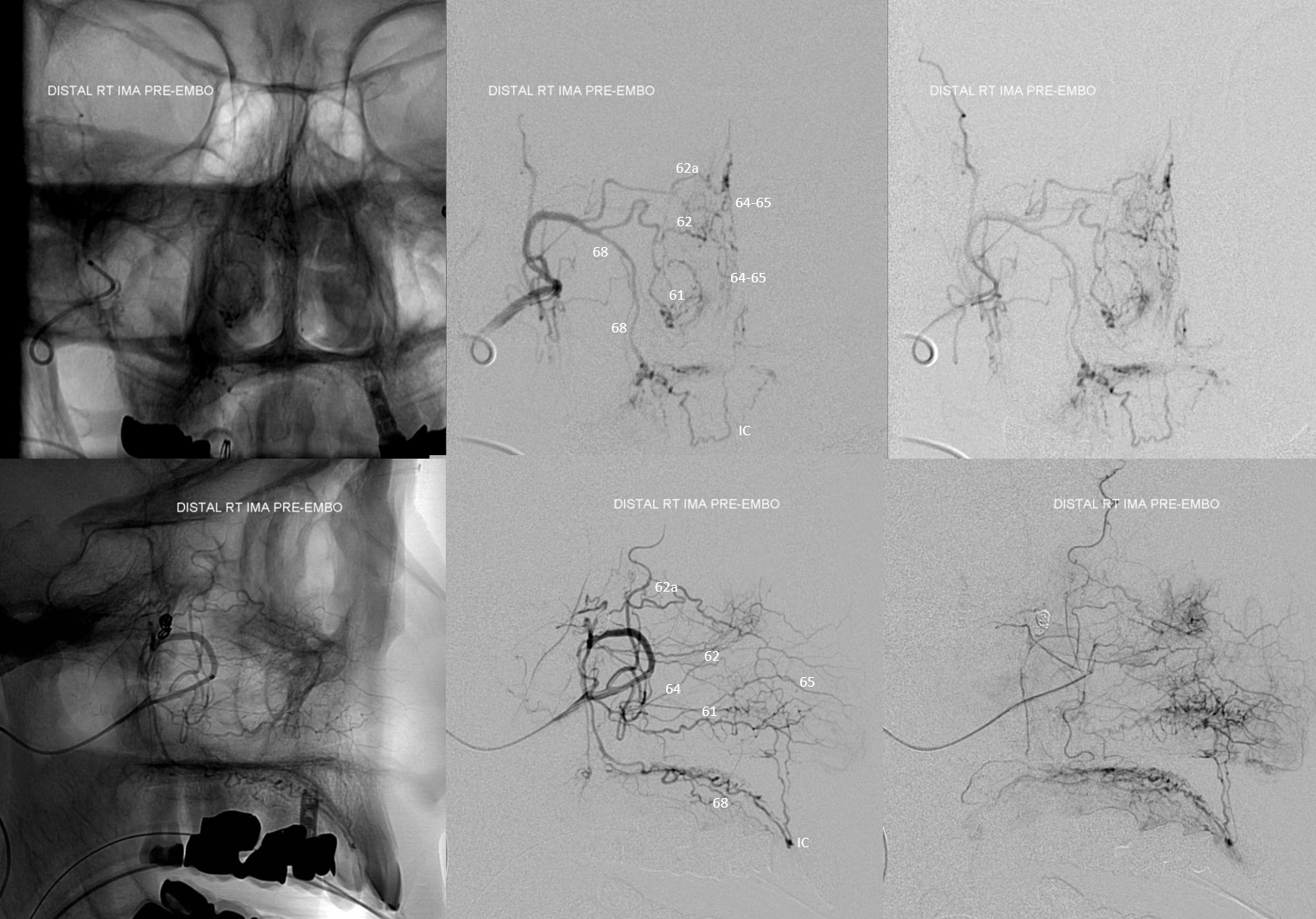
Of course, volume rendered images can be very helpful…
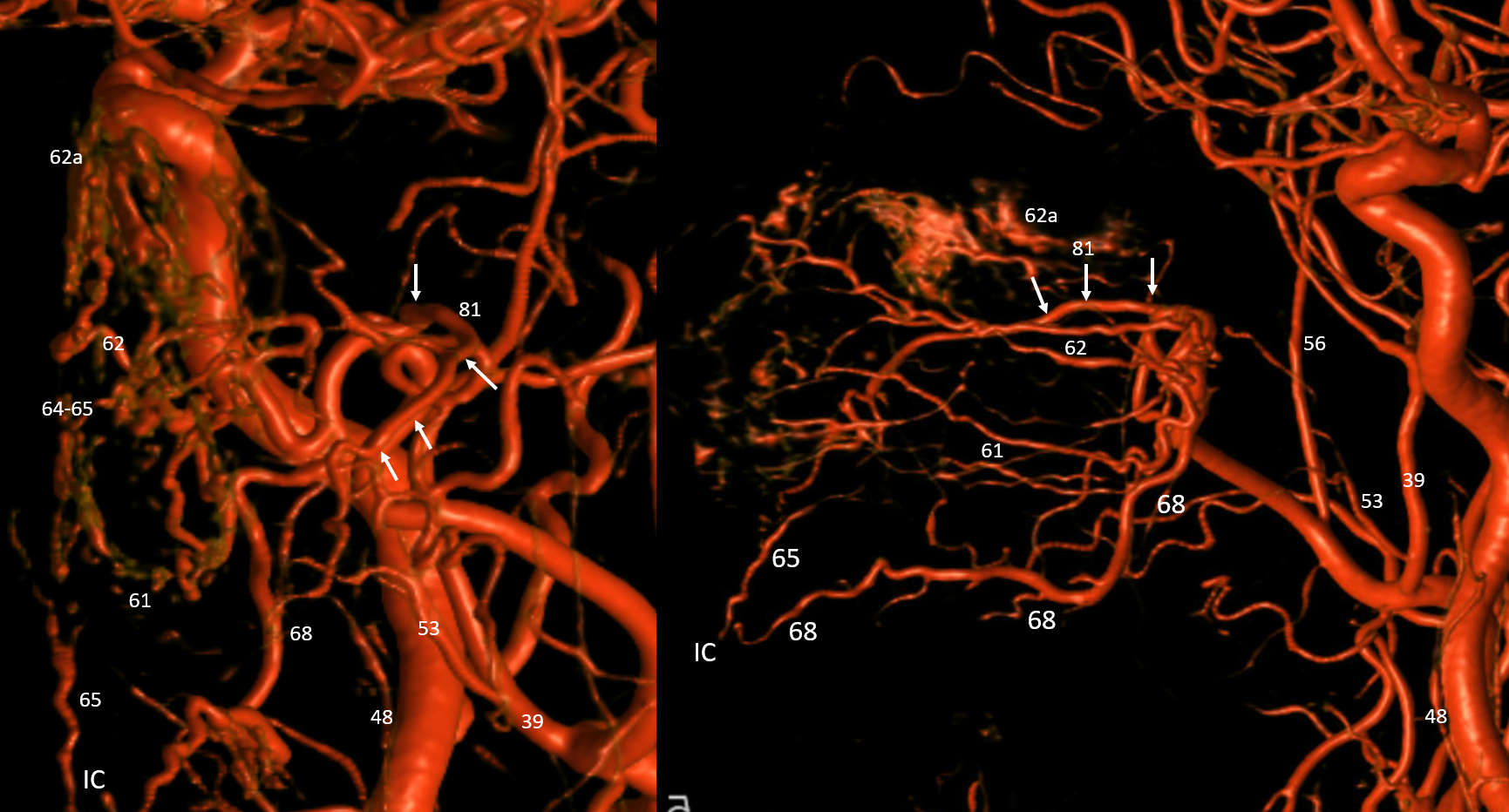
Stereos are great also
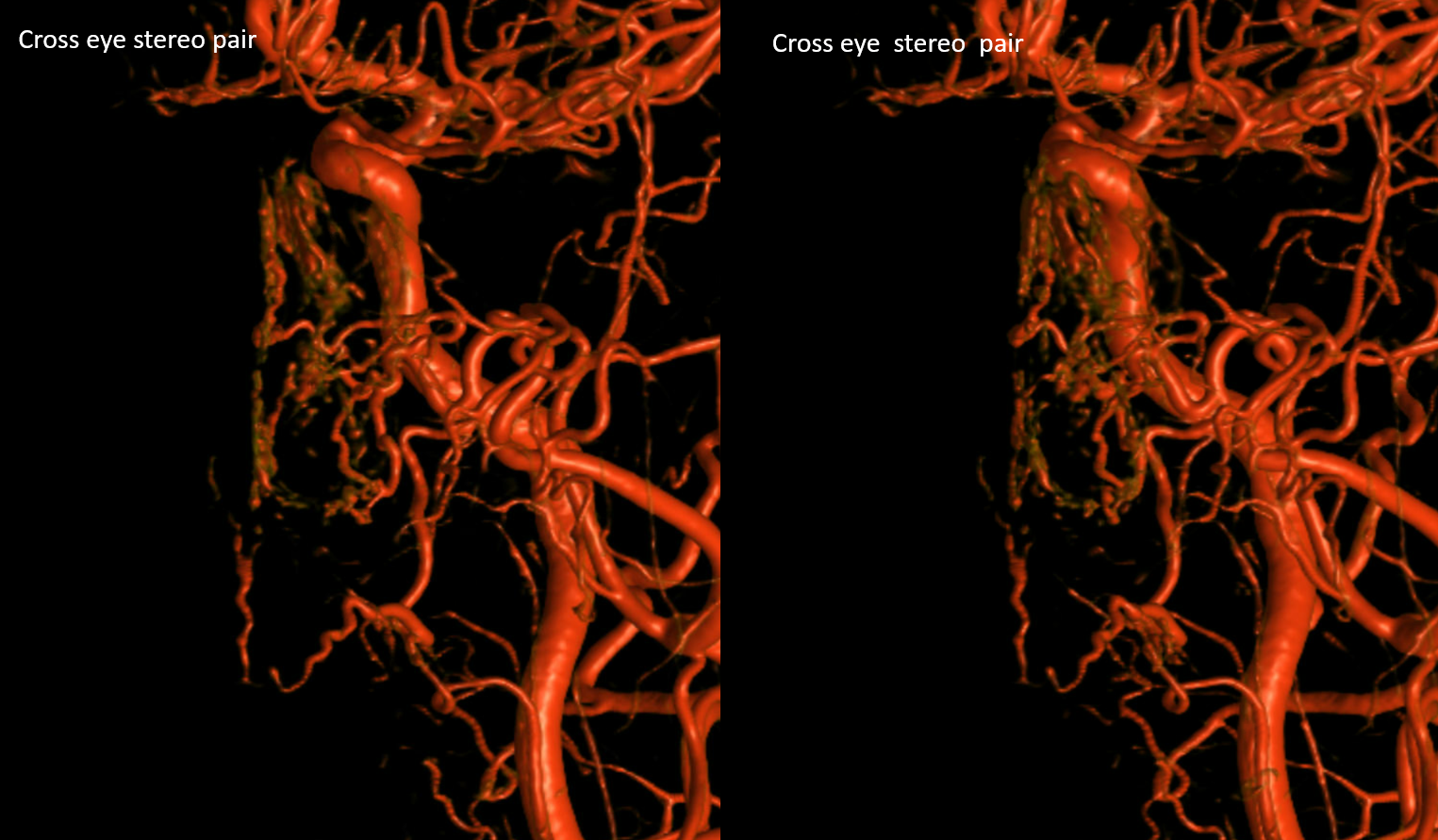
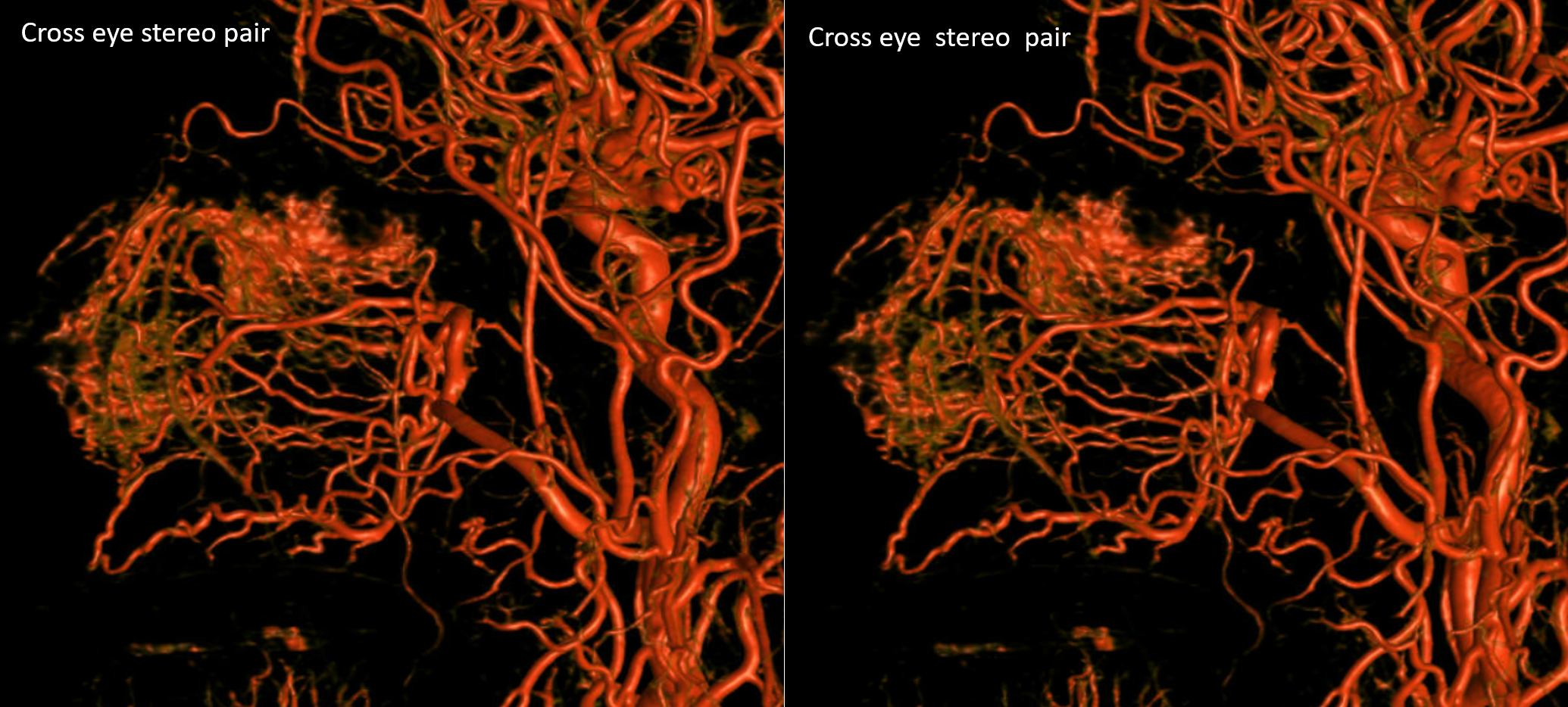
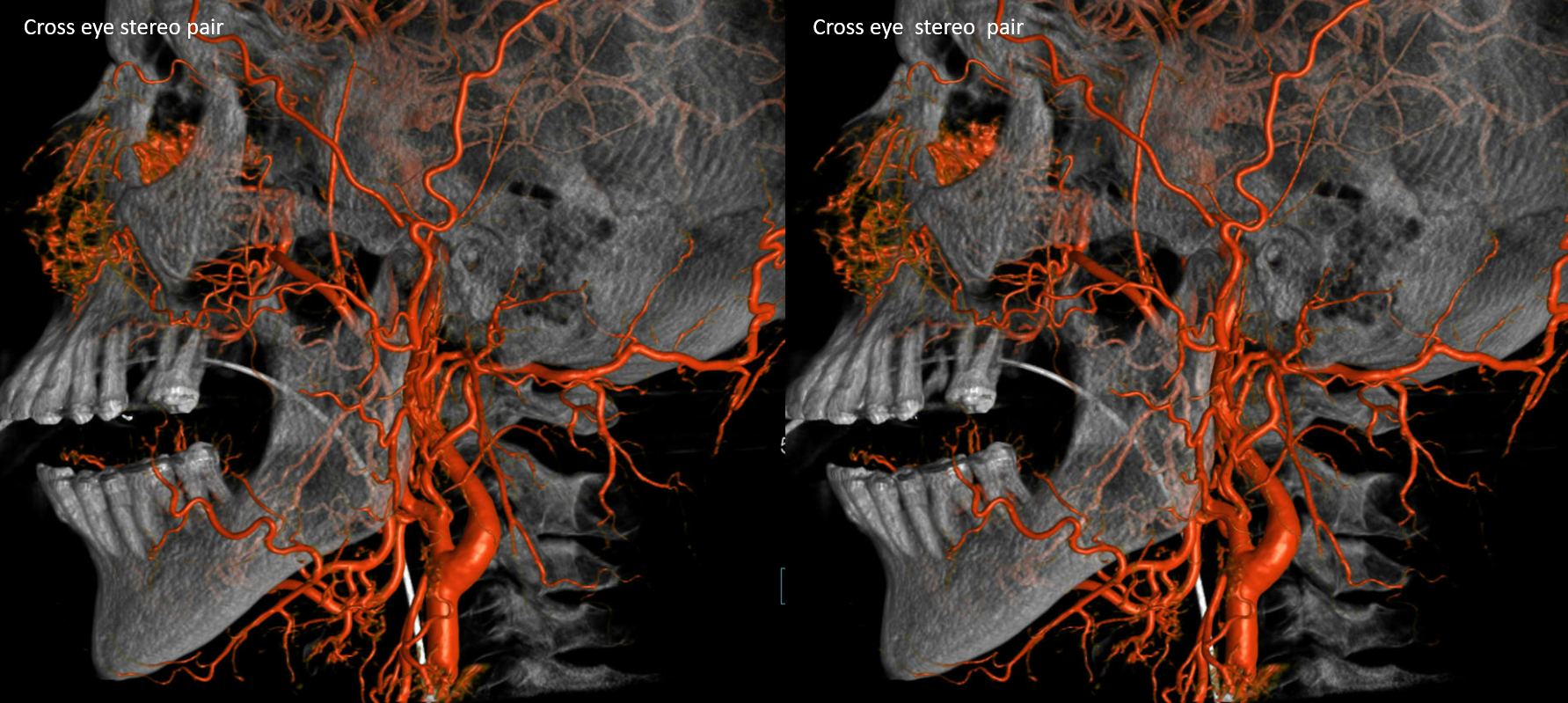
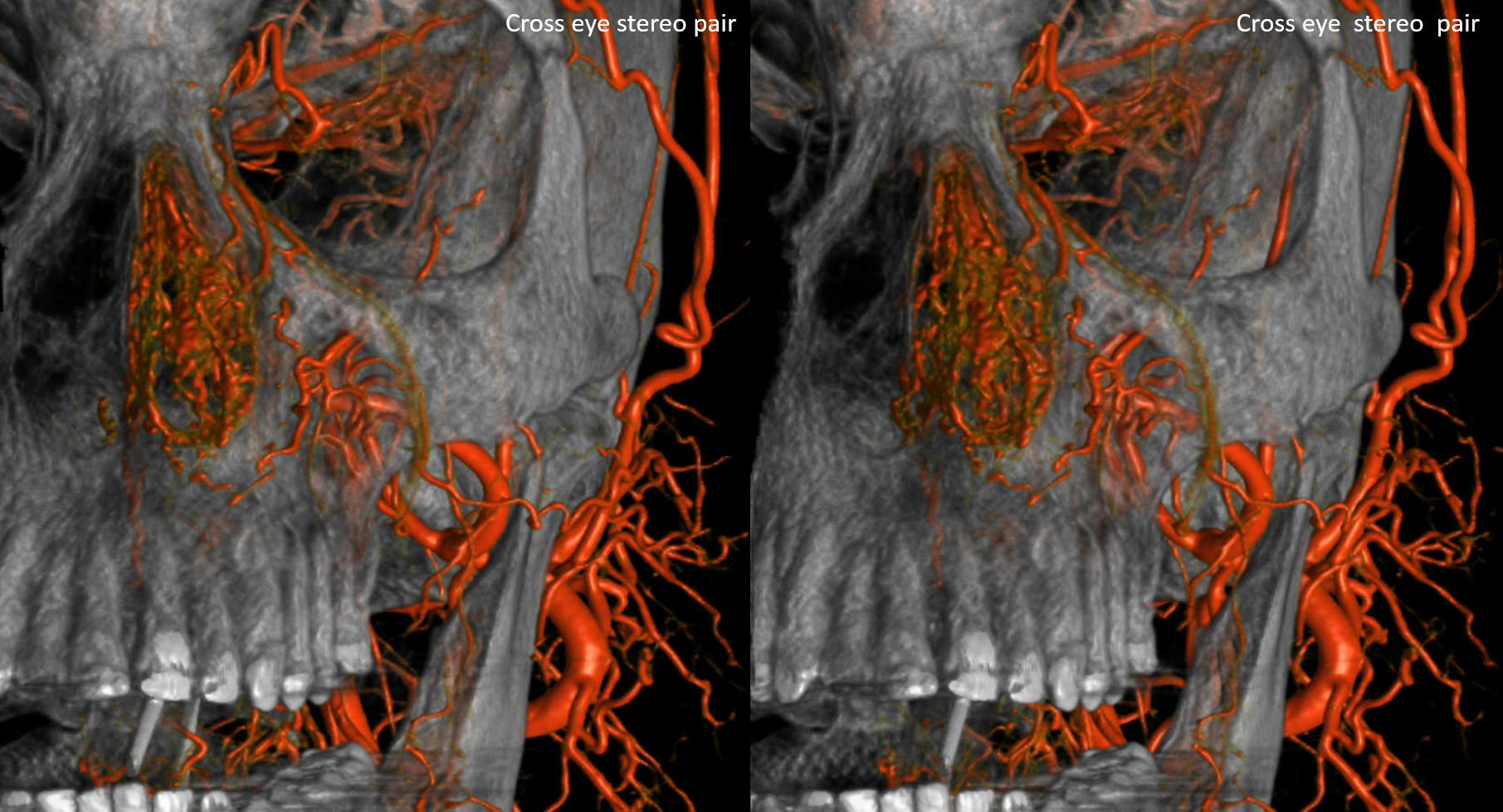
MIPs are superb of course
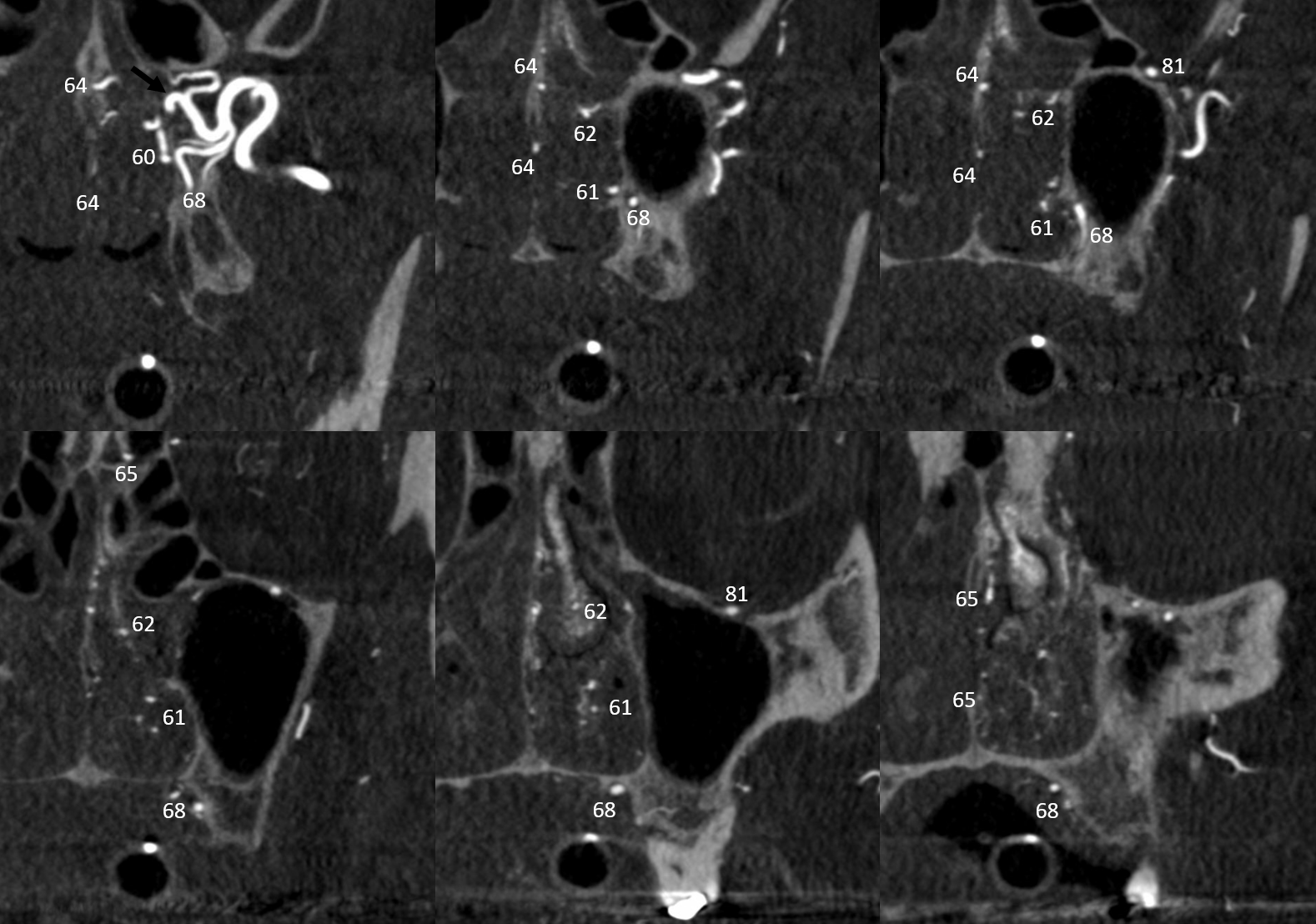
Balance with Ethmoidal Arteries
Septal system (purple) here is mainly supplied by the ophthalmic via anterior ethmoidal (red) artery. When particularly big, ethmoidal supply can contribute to failure of epistaxis embo. In this case, the ethmoidals must be surgically closed
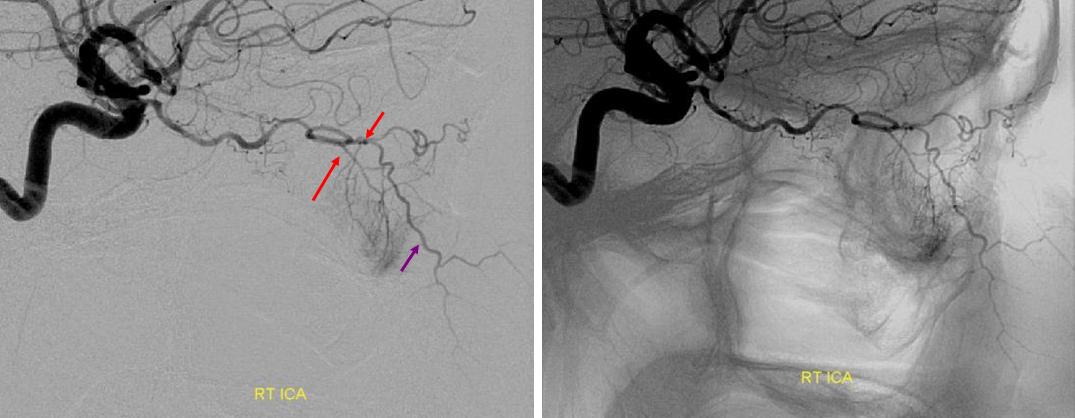
Another example, large ophthalmic because it supplies lots of nasal septum (pink), cutaneous nasal branch (white), and anterior forehead tissues (purple, supraorbital/supratrochlear 83/84)
Another example of supply to the upper nasal region (superior turbinate, upper septum) — the best way is on frontal views, ethmoid branch reaching to midline, with mucosal blush
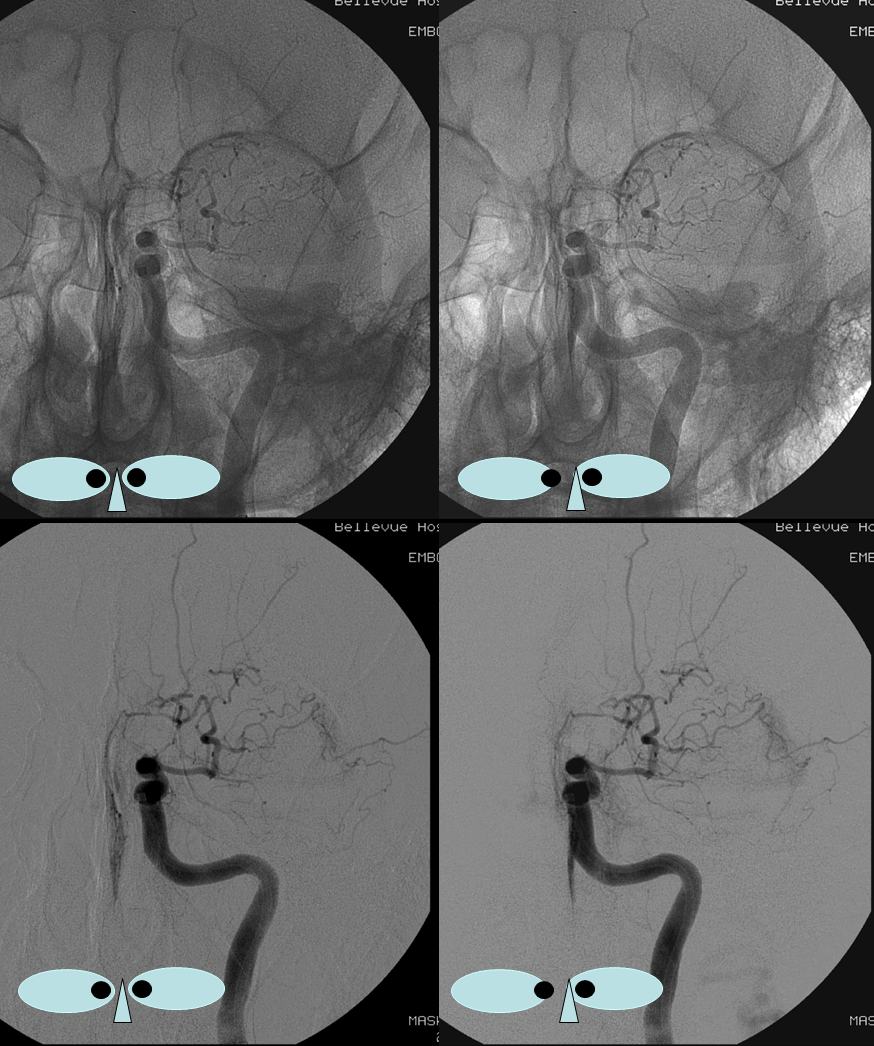
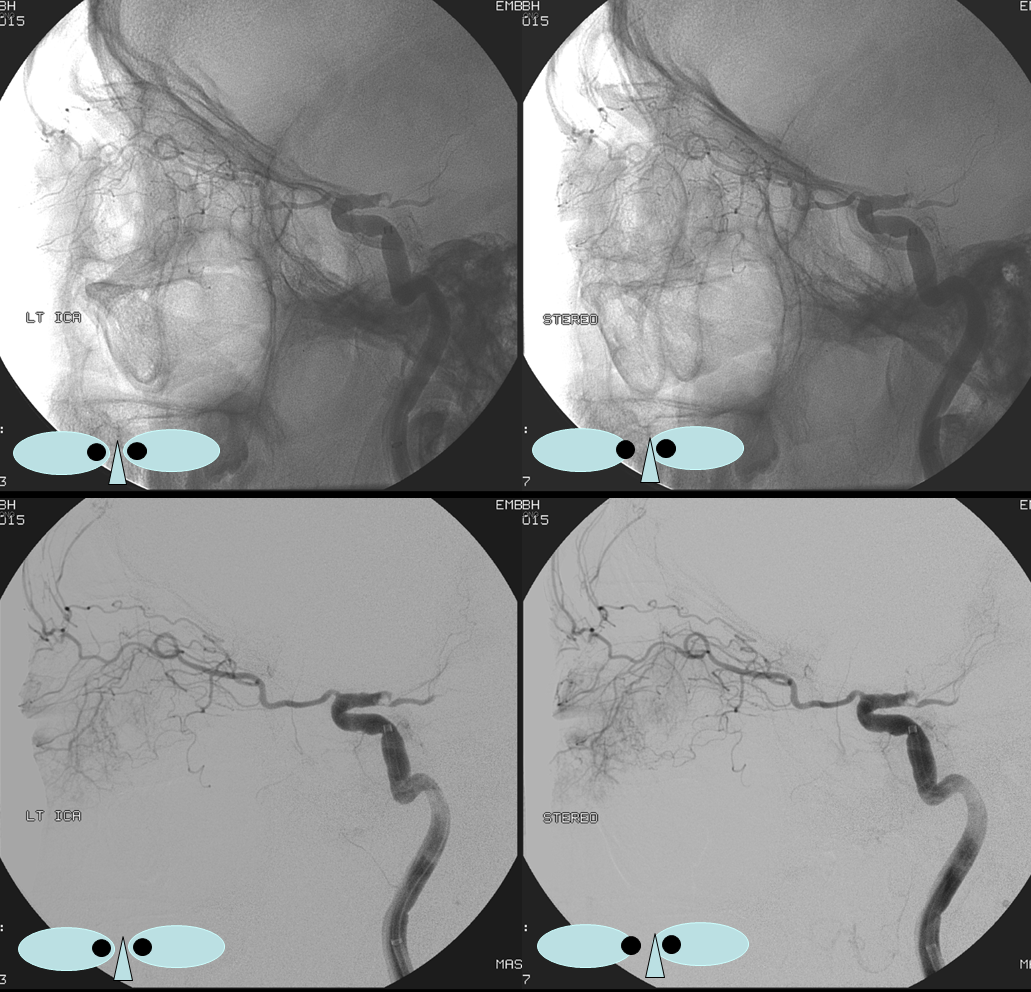
Notice branches to the upper and lower eyelids on lateral views! — not labeled, try to stereo
Hypoplastic sphenopalatine branch — Infraorbital takes over
More examples of balance — here the sphenopalatine contributes to some septal supply. The turbinates are taken care of by infraorbital artery — nicely seen in the infraorbital canal on partial native mask views
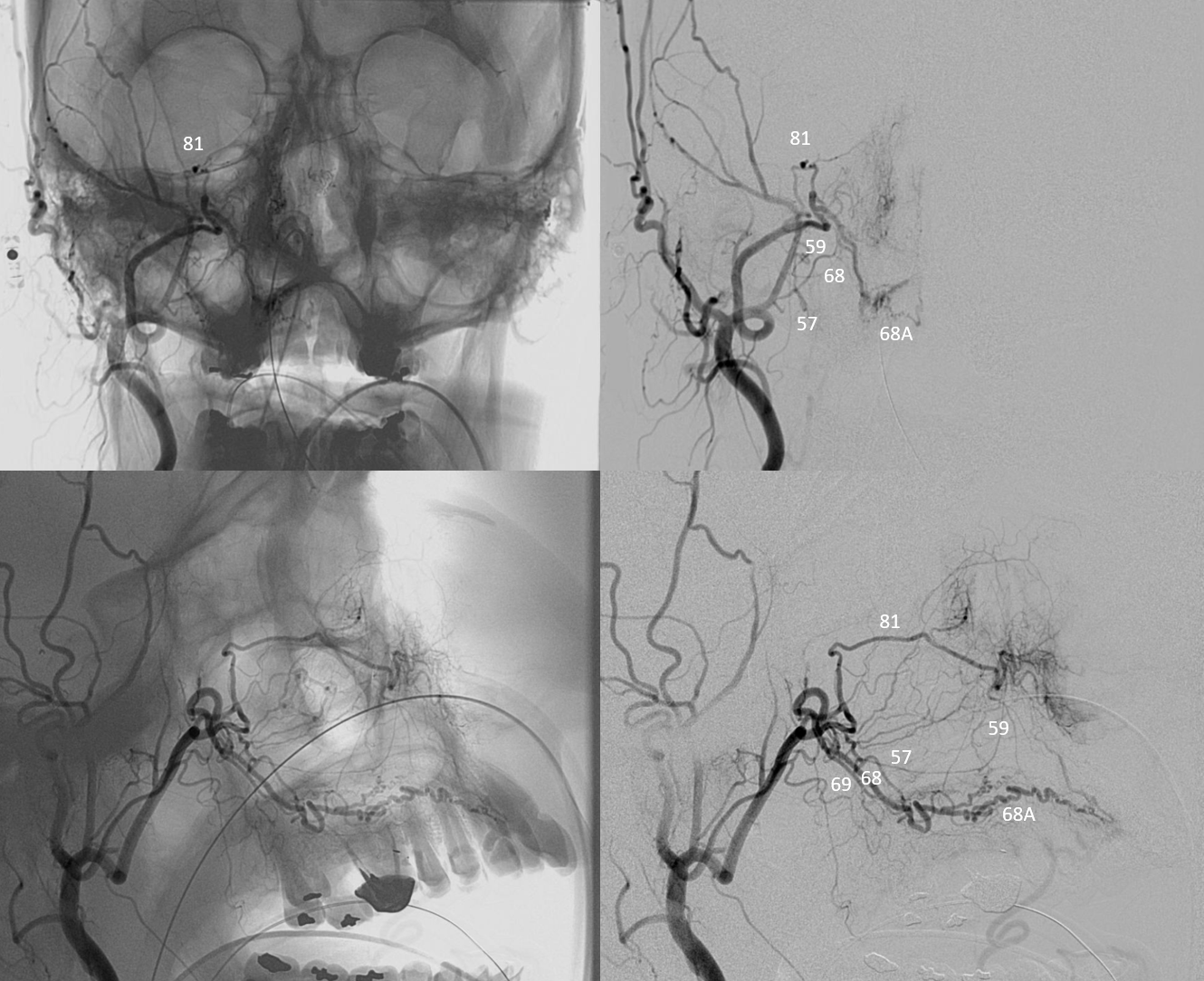
Stereos
